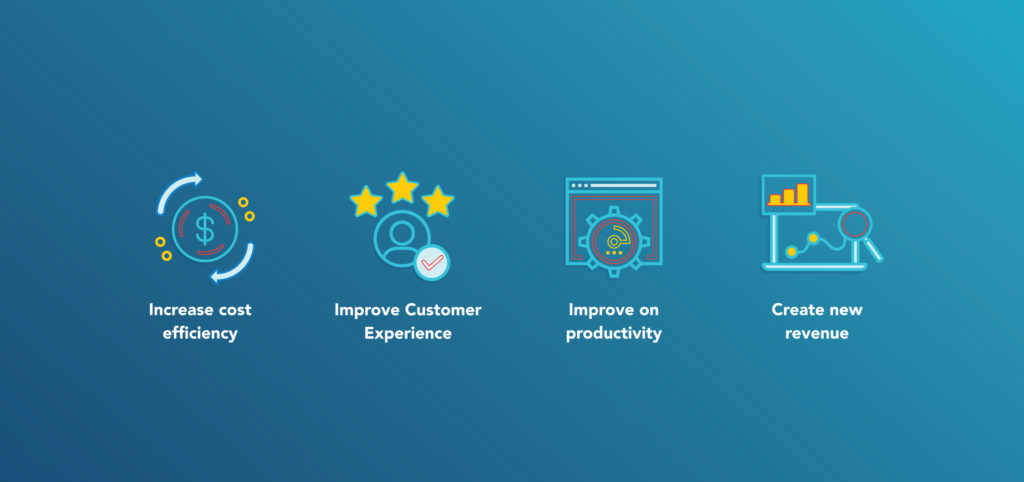The Internet of Things (or, IoT for short) is reshaping the world as we know it. From leisure to business to how we clock our hours at work. Inter-connected devices in our homes, in our cars and at the office are making our lives easier, faster and more productive in a myriad of ways.
Data can be captured from various sources, depending on the type of organisation, industry, and discipline. And, with the Internet of things, data can now also be captured from machines and device sensors. By connecting and collecting this wealth of data securely in the cloud, organisations can capitalise on their IoT data.
Recognising the value of the data
Although not its main potential, collecting machine data and accurately analysing it enables businesses to become more data driven. Yet, businesses still struggle with the obstacle how to gain access to the data. TensorFlow confirms this when stating that “[t]he biggest obstacle to using advanced data analysis isn’t skill or technology; it’s plain old access to the data.” Moreover, even if businesses successfully overcome the challenges associated with data collection, they still fail to deliver systems that can drive the business forward.
Analyse the data to provide real value
When we refer to collecting data, it does not only refer to machine data. The McKinsey Global Institute explains that the “greatest potential for creating value from IoT for manufacturers will be in operations’ optimisation, making the various processes within the factory more efficient. This includes using sensors, rather than human judgment (and human error), to adjust the performance of machinery.”
A sensor may warn of a potential malfunction or alert a supervisor when a machine malfunction occurs, but if your IoT system cannot combine this data (such as temperature, service history, etc.) and produce an informed course of action, you might as well use warning lights alerting the supervisor and a manual shut-down protocol. Monitoring machines using an effective IoT system to understand and interpret the data can lead to increased predictive maintenance that in turn optimises machine performance. “Using sensors to determine when machines need service can prevent breakdowns and save on routine maintenance costs.”
What should be emphasised is that to provide real value, your solution should be able to exchange data with your CRM, ERP, and other enterprise systems. Only then will your IoT strategy be capable of triggering proper workflows.
Humanising IoT data
At the centre of all of this sits us, humans. As IoT becomes more pervasive around the world, it is not only the manufacturers of sensors or the developers of systems linked to the connected devices that will prosper. IoT will bring unprecedented efficiency and convenience to the daily lives of individuals, employees, and businesspeople by marrying data and analysis in real-time. Entirely new industries requiring as-yet unknown skills will rise, bringing new prosperity to countries and individuals. Some estimates state that IoT alone will in a few decades contribute an amount to the global economy equal to the entire GDP of the United States. IoT has the power to be truly transformational and help chart a course for humanity that will ensure its prosperity for generations to come.





